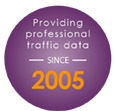Speed surveys show that 20mph zones may be too slow
Lowering the speed limit is one of many traffic calming measures applied across the country. In many cases, speed limits are reduced from 30mph to 20mph, and this tends to be in particularly busy residential areas or around local amenities such as schools and shops, where there is more pedestrian traffic. However, in some cases, speed surveys show that most traffic exceeds this low limit, so is 20mph too slow?
Bristol speed survey highlights issues
An example of this has been raised in Bristol, where a number of new 20mph zones were introduced across the city during the course of 2015. Campaigners in the areas where the new limit has come into force say that most drivers are ignoring the limit, and the changes simply aren’t working. A recent study by the Bristol Post showed that nine out of 10 vehicles, including council vehicles, exceeded the speed limit, with an average speed of 28 mph.
The campaigners believe that rather than impose blanket speed limits, each area should be considered separately – whilst a 20mph limit might be right for some roads, others might benefit from other speed reduction methods such as changes to the road layout, and more traditional traffic calming measures.
When does a speed survey help?
It’s not just cars going too fast that can cause problems. Traffic that moves too slowly creates bottlenecks and traffic jams resulting in longer journey times and frayed tempers. Drivers may be tempted to overtake in dangerous places, or tailgate other drivers, making the road even more dangerous than it was under a higher speed limit. A speed survey will help to see what average speeds are being used in a particular area, and highlight where other measures may be a safer way to protect both road users, pedestrians and residents.
Speed surveys from RDS
At Road Data Services, we conduct a wide range of surveys from speed surveys to journey times and pedestrian safety. Each survey is tailored to your needs and we can present the data in any format you choose. Our surveys are used to help make important decisions about traffic management, road layout, the planning of new developments, pedestrian and cycle safety and much more. To find out how we can help with your project, please contact us today.
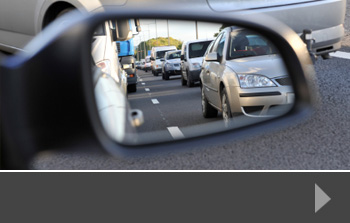
Traffic Surveys
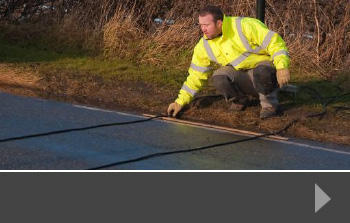
Automatic Traffic Counts
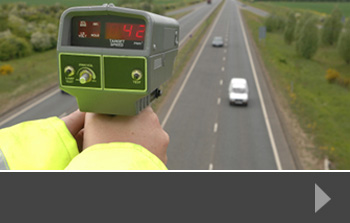
Speed Surveys
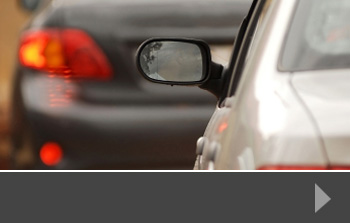
Queue Surveys
Speeding is a real problem on our roads – both urban and rural. Many drivers break the speed limits – particularly in 30 and 40mph zones – and the police use both fixed speed cameras and mobile speed units to monitor and control particularly difficult areas. In addition, long-term measures such as installing speed bumps to calm traffic can be used to reduce vehicle speed.
Of course, one of the reasons drivers speed is to get to where they are going as fast as possible. For many, this is because over-crowded roads, poor traffic planning and road works and repairs slow journeys down.
Do speed camera tickets work?
The Association for Chief Police Officers’ (ACPO) Speed Enforcement Policy Guidelines have been in place since 2011 and cover a period up to and including 2015. The guidelines observe that: “When a road looks and feels like the speed limit experience shows many will comply.” So in a heavily built-up 30mph area with schools and shops nearby, drivers are less likely to exceed the speed limit than on a road where there is little housing or building and no pedestrian activity.
The ACPO report says that policing speed limits is expensive, and signage should always be clear and appropriate, making it obvious to road users that compliance is expected. It also says that clear speed limits produce the following benefits:
Reduced casualties, both in terms of numbers and severity;
Reduced demand upon the Health Service;
Reduced conflict between motor vehicles and other road users;
A calmer and more free-flowing traffic environment; and
Improved quality of life in local communities
How do we control speed?
Police and local authorities tend to look for ways to reduce speeding without using additional manpower. These options include:
Lowering the speed limit where appropriate
Installing traffic speed humps
Adding traffic calming solutions
Installing speed cameras
If a section of road is particularly prone to speeding drivers, the police may set up a mobile speed unit either as a preventative or punitive measure, and most drivers who receive a speeding ticket will improve their driving as a result.
Traffic speed monitor surveys from RDS
Talk to us about our speed surveys and how they can help you to gather independent data on speeding in a particular area. We can also help with journey time surveys, so that you can see how and where to improve road conditions to promote smoother journeys and more reliable journey times.
The Highways Agency has been given 18 months to look at ways of tackling pollution on stretches of the M1 and M3 motorways. The affected areas are 32 miles of road between junctions 28 and 31 of the M1 and just 2.8 miles of the M3 between junctions 2 and 4a.
Speed, surveys say, could contribute to higher pollution levels, and one of the solutions had been to impose a 60mph speed limit on both stretches between 7am and 7pm. However, consultation with motorists and with local businesses resulted in a widespread rejection of the plan, and the Transport Secretary, Patrick McLoughlin, has said that this would not be the right solution.
Alternatives to speed reduction
Although a blanket approach to reducing the speed limit has been ruled out, a variable speed restriction could still be imposed on the routes, cutting speed when air pollution is particularly bad. Other solutions include the use of higher barriers which funnel the fumes away from ground level. Already trialled in Holland, these barriers have been found to reduce air pollution and also noise from the carriageway.
Larger vehicles, such as freight-carrying lorries and trucks are also more likely to cause air pollution and a further solution would be to ban those vehicles from the motorway at peak times. This would certainly be objected to by the Road Haulage Association and haulier companies, who would have to change routes and schedules if travel was restricted.
Speed an issue as capacity increased
The concern about air pollution and its relation to the speed of traffic comes as both motorways undergo carriageway improvements to increase capacity and reduce journey time. This is likely to become an issue in other parts of the UK motorway network as motorists and businesses demand better road systems, and local people become concerned about the effect of such work on the environment around them.
Speed surveys from RDS
We can help to identify areas where speed is an issue – either for road safety or for public health. Use a speed survey in conjunction with a journey time survey or general traffic survey to see where improvements can be made in your area, or how a new development might impact local traffic.
All our traffic surveys are designed to each project and we supply data in the best format for your needs – to find out more, just contact us today.
Reports suggest that the government is considering increasing the penalty for speeding fines by up to four times, in a move that it hopes will dissuade drivers from breaking speed limits on motorways and other roads. This is despite claims from road user groups that traffic speed surveys and other research shows that overall speeds have dropped in recent years.
Motorway speed fine up to £10,000
Ministers are suggesting that the highest speeding penalties on a motorway are raised from £2,500 currently to £10,000. They are also recommending that the fines for speeding for dual carriageways and general roads across the UK rise from £1,000 to £4,000. Introducing higher fines for other offences, such as driving whilst using a mobile phone, or driving without insurance are designed to discourage motorists from breaking these laws.
Motorists already slowing down
The speed laws are some of the most-often broken in the UK, and some road safety campaigners are more worried about enforcing the lower speed limits than the upper ones. Travelling at 40mph in a 30mph zone is seen by many as being more dangerous than travelling at 80mph on the motorway instead of 70mph. Groups that represent motorists, however, say that the current fines system seems to have had a positive effect on the speed we drive at, with research showing that we are generally driving more slowly and safer than at previous times.
Just in it for the money?
Of course, higher fines means more money in the government coffers, and many feel that this is a form of stealth tax. It is not known exactly when these changes will come into force, as they still need to be debated and approved by Parliament.
Speed surveys from RDS
If you are concerned about traffic speeds in your area, start by collecting accurate data that shows exactly what’s happening. Our tailored traffic speed surveys give you a clear picture of road use and road speed in a defined area. This helps planners to look at new road layouts, road traffic calming measures, safe pedestrian crossings and other road safety measures that can help to cut speed and keep road users safe.
To find out more about how we can help, either with existing road issues or for new road planning, just contact us today.

Parking Surveys
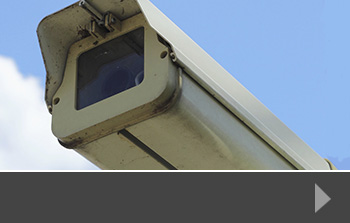
ANPR and Bluetooth
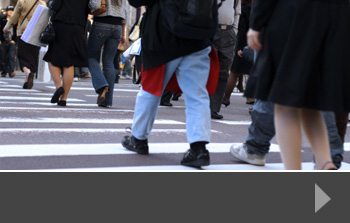
Pedestrian Surveys
<a title="Interview Surveys" href="http://www.rdservices prix viagra en pharmacie.co.uk/interview-surveys/”>

Interview Surveys
An AA Populous survey of over 24,000 members found that more than two thirds of respondents want to be consulted before 20mph speed limits are imposed on the streets where they live.
The survey, which focused on the 20mph speed limit, is being increasingly used in streets across the country which could reduce accidents. Key areas where a 20mph limit is introduced include near to schools and hospitals, where vulnerable people are more likely to be using the roads.
The AA also found that those whose regular journeys might be affected by a lower speed limit wanted to be consulted first.
The motoring organisation asked respondents a series of questions about the 20mph limit, and invited them to agree or disagree. Responses were then analysed, with a geographical segmentation added, to see how responses differed across the country.
Speed consultations high on the agenda
Only 32% of respondents agreed with the statement: “20mph speed limits across residential neighbourhoods offer such a great road safety benefit that residents’ views need not be taken into account.” 61% agreed that: “Speed camera enforcement should only be used in 20mph speed limit zones when a specific problem emerges.” And 44% said they would “…support police-approved speed checks carried out by local residents along a 20mph speed limit in my neighbourhood.”
Edmund King, the AA’s president commented: “Neighbourhoods face differing challenges from traffic: some may need to slow down their own residents and reduce the risk of accidents, others have a ‘rat-running’ problem that a 20mph speed limit on its own won’t address. That is one of the reasons why, not only do 69% of AA members want a say on lower speed limits along their own streets, but 55% of them want to give an opinion on local zones restricted to 20mph.”
Why speed surveys can help
You can see if there is a problem on streets in your locality by conducting a simple traffic speed survey. This survey is designed to look at speed on a certain section of road at various times of the day, giving accurate data on speed and road usage, which is invaluable when consulting with residents and making a decision on speed limit enforcement.
At RDS, we design, conduct and report on a range of specialist road surveys, including speed surveys and traffic surveys, giving you the quality data and advice you need to make the best recommendations or decisions.
An £88 million project to manage traffic flow and improve driver safety on a seven-mile stretch of road where the M4 meets the M5 at the Almondsbury Interchange just outside Bristol. The project uses a variety of smart technologies to manage traffic, helping road users to keep moving safely, reducing the potential for accidents and making the most of the motorway network.
HA Traffic Survey
The scheme was launched in January 2014, and now the Highways Agency is conducting a traffic survey which asks for driver experiences, so that the Agency can assess the effectiveness of the system in its early days.
The scheme uses a number of technologies and traffic management options which may be familiar to those driving on other busy sections of the UK motorway network. These include variable speed limits, the use of the hard shoulder as an additional lane during heavy traffic and responsive overhead signs that can give quick and accurate information to drivers about lane closures, accidents or incidents ahead and access for emergency vehicles.
Feedback on Smart Road Management
“More than 140,000 vehicles use this stretch of the M4 and M5 every day,” said Paul Unwin of the Highways Agency. “After a two year period of residents and commuters patiently enduring road works and heavy construction, we are now keen to hear just how our road users are adjusting to the new system. I therefore urge drivers to take our online survey, so we can better understand the needs of road users for future projects.”
The Highways Agency also said that although work was complete and the project launched, there will still be some overnight closures and diversions as additional work takes place. Diversions will be in place for those road users affected.
Do you use this stretch of motorway? If you’d like to give your feedback, you can visit the Highways Agency Traffic Survey page.
Traffic Survey Data from RDS
For detailed, tailored traffic surveys, including automated traffic counts, speed surveys, queue surveys and journey time surveys, talk to RDS. We specialise in designing, implementing and reporting on a wide range of traffic and pedestrian-related issues. Our data helps you to make decisions about highways management, traffic flow around new developments, improved pedestrian and cyclist safety and much more. To find out how we can help, just contact us today.
A reduced speed limit of 60mph has been proposed by the government on a specific section of the M1. The reduction, which would be in place between junction 28 for Matlock and junction 35a, just north of Rotherham, is in order to improve air quality and would apply between 7am and 7pm every day.
But some organisations are worried that reducing the speed limit will increase congestion and lengthen journey times on a section of motorway that is already very busy.
Variable speed surveys
Variable speed limits are used successfully on most motorways in the UK network, allowing traffic managers to keep traffic flowing wherever possible, but the new proposals go one step further. By enforcing a 10mph reduction in speed for 12 hours per day, motoring bodies such as the RAC say that the impact would be more negative than positive.
The Highways Agency, which has put a document on the issue out to consultation said that the change will reduce congestion, improve journey time and make the motorway network more reliable. It anticipates that, should the new limit be introduced, it would remain for several years. There is also the possibility of extending lower limits to other areas of the road network if this initial scheme works well.
Would lower speed reduce pollution?
Not everyone is convinced that lowering the speed of vehicles would have a big enough impact on air pollution to counteract the other potential consequences of the policy. Some commentators have pointed out that the most polluting vehicles are lorries, which are speed limited anyway, and that cleaner engineering and more environmentally friendly cars means that air quality will improve naturally over the coming years.
Insightful speed surveys
If you need to find out more about the speed traffic flowing on roads in your area, or around your development, call us today. Our tailored surveys and detailed data collection give you the information you need to make informed, insightful decisions that have a positive impact on road users and those who live and work nearby.
To find out more, just call us today.
Essex County Council has agreed that a speed survey is necessary on a road in Basildon that is regularly used as a shortcut. Dry Street is over 1km long and is often used by drivers as a cut-through to the nearby A13 Stanford-le-Hope By-pass. Dry Street also has the Basildon University Hospital at one end, so sees a large volume of traffic during the day.
Speed survey for 30mph limit
The speed of traffic on the narrow road was blamed for the death of a local man earlier this year, and local people campaigned at that time to change the speed limit to 30mph throughout the length of the lane, which was mostly regulated at the national speed limit. The council reduced the speed limit to 40mph, which it had planned to do before the fatal accident, and had originally said that it would not revisit the limit until the new 40mph restrictions had time to ‘bed in’.
Residents believe that 40mph is still too fast given the amount of traffic and the width of the road, and some have said they would like to reduce the speed to as little as 20mph, but accept that 30mph is probably the most likely outcome. The council agreed to carry out the speed survey during October 2013, and has said it will be in close consultation with the local police force over improving safety on the road and enforcing the new limit, if introduced.
What is a speed survey?
A speed survey typically uses a standard speed gun to record the speed of vehicles on a given stretch of road. For a long road, data may be collected at several points. Vehicles are surveyed in both directions to give a complete overview of road use, and the data gathered from the survey is then analysed and reported so that informed decisions can be taken.
Speed surveys from RDS
At Road Data Services, we are experienced in speed surveys, handling everything from the planning of the survey to its execution and reporting. We can use a single surveyor or supply a team for bigger areas, and we can also implement an automatic traffic count survey which gives a much bigger, more informed picture of road usage and speed.
To find out more, just contact us today for a chat or to arrange a survey.
Around the country, local pedestrian surveys are helping to make life safer for those who walk and cross the roads. Prompted by a variety of concerns from traffic blind spots to speeding traffic outside school gates, local communities are benefitting from surveys that show how new traffic planning or adding a pedestrian crossing can help to reduce accidents.
Safer to walk in Scunthorpe
A particularly busy road in Scunthorpe is benefitting from an investment of £70,000 in improved road safety measures which should make it a much safer place to walk. Following council surveys which showed over 40 accidents in the past five years, 18 of which involved pedestrians, the speed limit will be reduced to 20mph, a zebra crossing will be added and the road could also benefit from speed bumps.
Warwick town centre re-introduces crossings
A traffic scheme in Warwick town centre that hoped to make the streets more pedestrian friendly has come in for criticism in the past year, and the Council has now decided to install a new pedestrian crossing. Having removed a zebra crossing for the original scheme and introducing “informal crossing points”, the Council hoped to make the streets easier to cross. However, pedestrians using the area have called for a crossing to be re-introduced and are delighted that the Council has agreed.
Speed checks may change crossing
Residents in Biddulph, Staffordshire, have been campaigning for a pelican crossing instead of a zebra crossing on a particularly busy road. They say that drivers are exceeding the 30mph speed limit and not stopping at the existing crossing, which makes it extremely dangerous for people to cross. After receiving a petition from over 200 people, the local council is carrying out a speed survey and has already introduced some measures to reduce speed and protect pedestrians.
Pedestrian surveys from RDS
We can carry out a variety of speed surveys and pedestrian surveys to collect data on journeys, crossing usage and general opinions about road safety. Contact us today to find out more.

